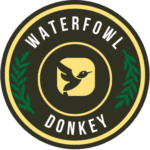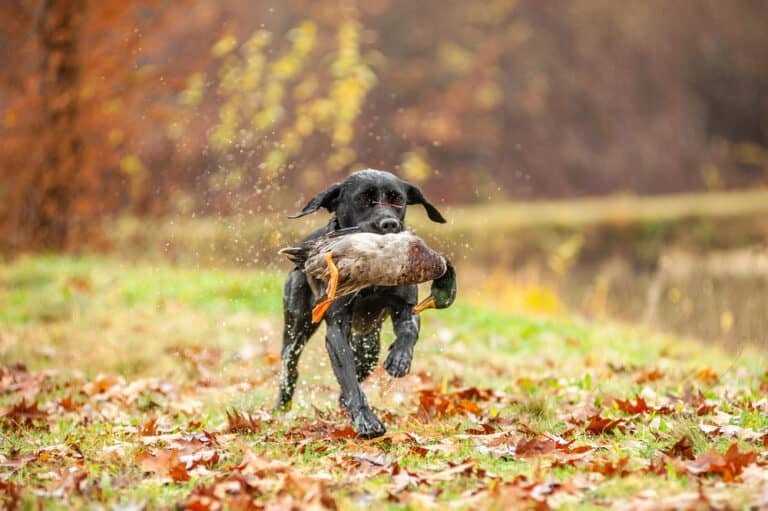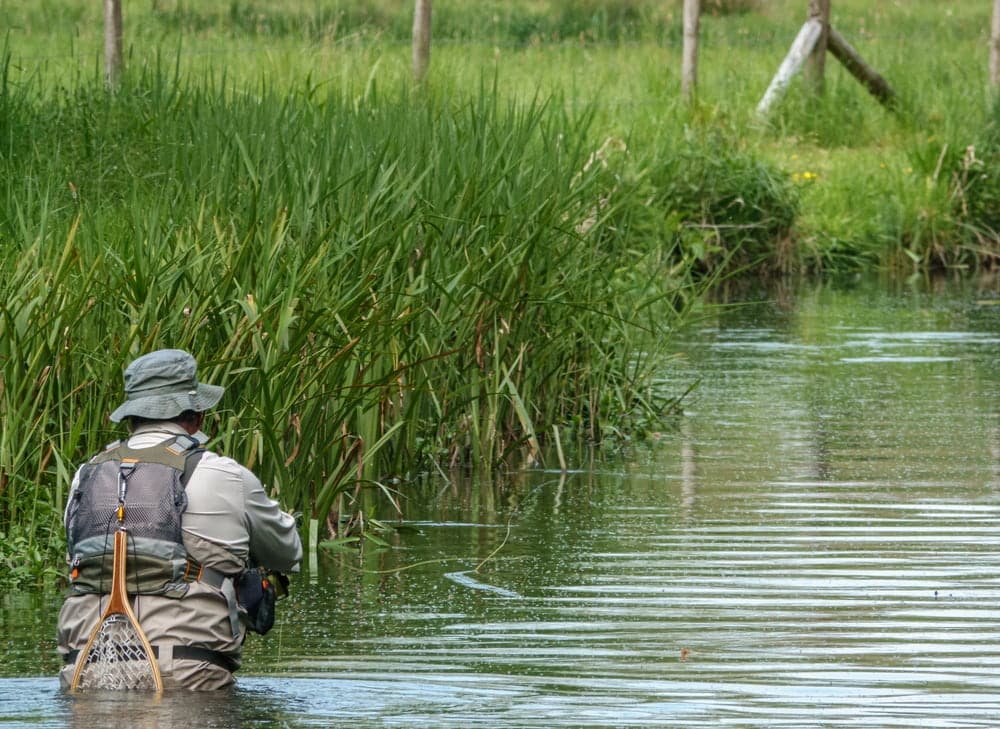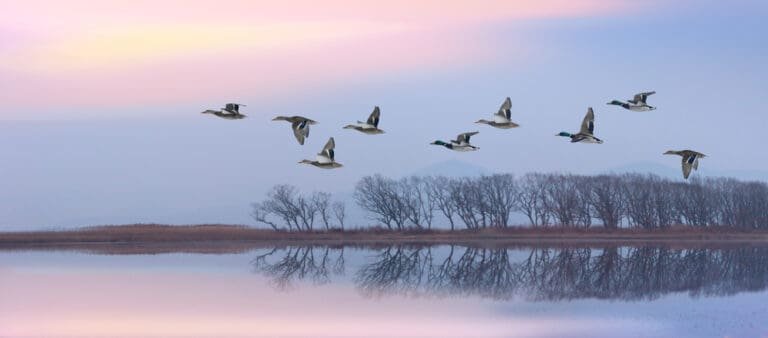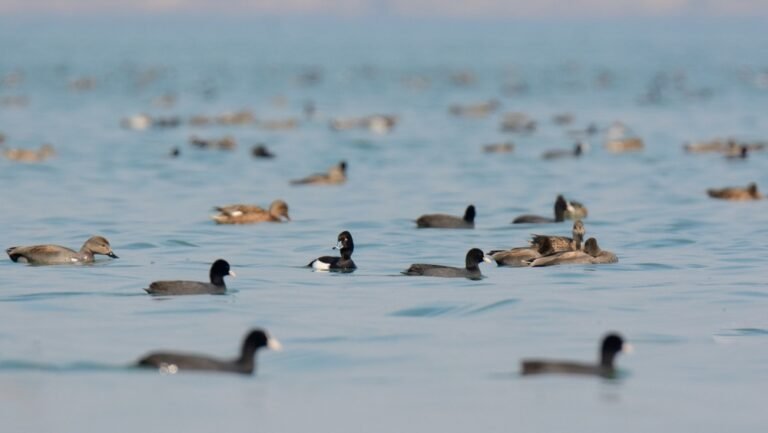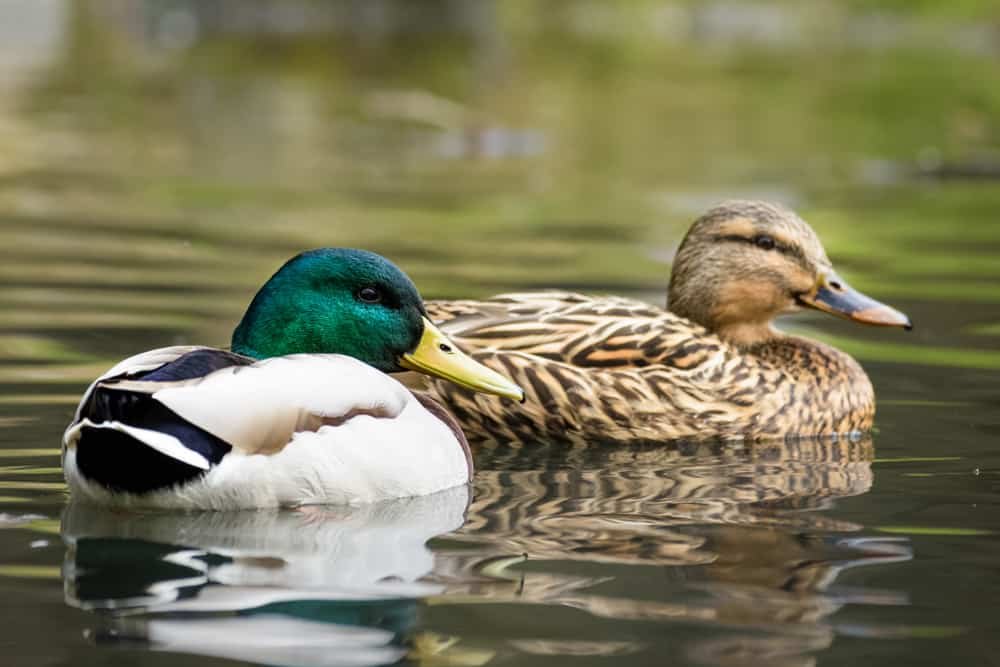Waterfowl Conservation – A New Approach That Might Work
Waterfowl, those enchanting creatures that grace our wetlands and skies with their presence, hold a vital role in maintaining the intricate balance of our ecosystems. From majestic swans to graceful ducks and charming geese, these avian marvels capture our hearts with their vibrant plumage and captivating calls. In this blog we are going to discuss waterfowl conservation.
However, beyond their aesthetic appeal lies a deeper significance that often goes unnoticed. Waterfowl play an essential role in preserving the delicate harmony of our natural world.
Importance of waterfowl conservation for ecosystem balance
Waterfowl serve as keystone species, exerting substantial influence on the ecosystems they inhabit. They are nature’s gardeners, tending to the health and productivity of wetlands by influencing vegetation growth and nutrient cycling through their feeding habits. Their constant movement between water bodies helps distribute plant seeds, facilitating the dispersal of flora across vast landscapes.
This cyclical relationship between waterfowl and wetlands creates a self-sustaining ecosystem that supports a diverse array of organisms. Furthermore, these magnificent birds act as indicators of environmental health.
Monitoring waterfowl populations provides valuable insights into the overall condition of ecosystems since changes in population size or behavior can reflect ecological imbalances or habitat degradation. The decline or disappearance of waterfowl can signal larger problems such as pollution, habitat loss, or climate change.
Threats faced by waterfowl populations
Sadly, the future survival of many waterfowl species hangs precariously in the balance due to the daily challenges they confront. While natural predation and resource competition are part of their evolutionary struggles, human activities have intensified these threats. Habitat loss poses one significant danger to waterfowl populations worldwide.
Wetlands, the crucial nesting and feeding grounds for waterfowl, are rapidly drained or degraded by urbanization, agricultural expansion, and industrial development. Without these essential habitats, waterfowl struggle to find suitable breeding areas and sufficient food sources.
Additionally, pollution of water bodies is a growing concern. Pesticide runoff from agricultural operations and industrial pollutants infiltrate wetlands, contaminating the ecosystem that sustains waterfowl.
To safeguard the future of these captivating creatures and preserve the ecological balance they help maintain, it becomes imperative to support organizations dedicated to waterfowl conservation. Through concerted efforts at local, regional, and international levels, we can ensure that future generations will continue to marvel at the graceful flight of these beautiful birds across our vibrant skies.
Major Organizations Supporting Conservation
Ducks Unlimited: History, Mission, and Impact
Ducks Unlimited is a renowned organization dedicated to conserving and restoring wetlands for waterfowl. With a rich history dating back to 1937, Ducks Unlimited has been at the forefront of waterfowl conservation efforts.
Their mission revolves around protecting critical habitats, primarily wetlands, vital for the survival and breeding of waterfowl species. By acquiring and restoring wetland areas across North America, Ducks Unlimited ensures that these regions provide suitable nesting sites, ample food sources, and safe resting areas for waterfowl populations.
Wetland Habitat Restoration Projects
One of the fundamental approaches Ducks Unlimited employs is its extensive focus on wetland habitat restoration projects. Wetlands are crucial in supporting diverse ecosystems and act as essential breeding grounds for waterfowl.
Through their collaborative efforts with landowners, government agencies, and other conservation organizations, Ducks Unlimited actively restores degraded wetlands by re-establishing natural hydrology systems and enhancing vegetation diversity. By doing so, they create optimal conditions for waterfowl to thrive while supporting countless other species that rely on these habitats.
Research and Education Initiatives
In addition to their hands-on conservation work, Ducks Unlimited places great importance on research and education initiatives. By conducting scientific studies in collaboration with leading experts in ornithology and wetland ecology, they gain valuable insights into the behavior patterns of waterfowl species and how best to protect them.
Furthermore, they invest extensively in educational programs to create awareness about the significance of wetlands among the general public. Through workshops, seminars, publications, and outreach events targeted at adults and children alike, Ducks Unlimited aims to inspire individuals to become active stewards of our natural resources.
Delta Waterfowl: Focus on Breeding Grounds and Predator Management
Hen Houses and Predator Control Programs
Delta Waterfowl distinguishes itself by placing a particular emphasis on the breeding grounds of waterfowl species. Understanding that the survival and productivity of waterfowl populations heavily rely on successful nesting, Delta Waterfowl implements innovative strategies to support this critical stage of their life cycle.
One such initiative is the establishment of hen houses—artificial structures designed to provide nesting sites for ducks. By strategically placing these hen houses in suitable habitats, Delta Waterfowl increases nesting opportunities, effectively helping boost waterfowl populations.
These programs employ various methods such as nest monitoring and predator removal techniques to reduce the impact of predators on waterfowl nests. By managing predator populations responsibly, Delta Waterfowl ensures a safer environment for breeding waterfowl and helps increase their chances of successfully raising offspring.
Research on Nesting Success and Survival Rates
To better understand the factors influencing waterfowl reproduction rates and overall population dynamics, Delta Waterfowl conducts extensive research focused on nesting success and survival rates. Through comprehensive field studies and data collection efforts, they gather valuable information about factors affecting nest success such as habitat quality, predation levels, weather patterns, and other ecological variables.
By analyzing this data over time, researchers at Delta Waterfowl gain insights into long-term trends in nesting densities and survival rates among different waterfowl species. This research not only informs their conservation strategies but also contributes to broader scientific knowledge regarding avian ecology.
Regional Initiatives for Waterfowl Conservation
North American Waterfowl Management Plan (NAWMP)
When it comes to conserving waterfowl populations across the North American continent, the North American Waterfowl Management Plan (NAWMP) stands tall as a shining example of collaborative efforts. This plan brings together the collective wisdom and resources of Canada, the United States, and Mexico in a united front to protect and restore vital habitats for waterfowl.
By pooling their knowledge and expertise, these countries have developed strategies that span the flyways traversed by migrating waterfowl. The NAWMP recognizes that effective conservation efforts require an understanding of the interconnected nature of these habitats, which often extend beyond national borders.
Collaborative efforts between Canada, the U.S., and Mexico
One of the key strengths of NAWMP lies in its emphasis on cooperation between Canada, the United States, and Mexico. These three countries have recognized that waterfowl do not adhere to political boundaries when it comes to migration or habitat needs.
By establishing partnerships and sharing resources, they can address conservation challenges together more effectively. This collaboration extends beyond governmental agencies to involve non-profit organizations, private landowners, indigenous communities, researchers, and passionate volunteers who contribute their time and expertise.
Habitat conservation strategies across flyways
The NAWMP takes into account the unique characteristics of each flyway throughout North America – Atlantic, Mississippi, Central, Pacific – tailoring habitat conservation strategies accordingly. These strategies focus on preserving critical stopover sites where exhausted migrating waterfowl can rest and refuel during long-distance journeys. Additionally, breeding grounds are given special attention through initiatives aimed at protecting nesting habitats such as wetlands or prairie potholes.
By focusing on specific flyways while maintaining a big-picture perspective on waterfowl conservation, the NAWMP ensures that efforts are targeted and impactful, addressing the needs of waterfowl populations throughout their entire migratory cycle. Regional initiatives such as the North American Waterfowl Management Plan (NAWMP) play a crucial role in waterfowl conservation.
By encouraging collaboration between countries and adapting strategies to suit specific flyways, these initiatives ensure that vital habitats are protected and managed effectively. This coordinated effort across borders helps to maintain healthy population levels and preserve the beauty and diversity of our cherished waterfowl species for generations to come
Lesser-Known Organizations Supporting Conservation
Atlantic Flyway Council: Protecting East Coast migratory route
Regarding safeguarding the feathered travelers navigating the East Coast, the Atlantic Flyway Council is at the forefront. They focus on preserving vital habitats, including coastal wetlands and stopover sites that are crucial resting spots for migrating waterfowl. Ensuring these areas remain intact and free from human disturbance creates safe havens for ducks and geese during their long journeys.
Their tireless work includes habitat restoration projects, such as reestablishing marshes and ensuring suitable food sources are available to sustain these magnificent birds. Thanks to their dedication, waterfowl populations have a better chance of flourishing along the Atlantic Flyway.
Restoration of coastal wetlands and stopover sites
One of the key initiatives undertaken by the Atlantic Flyway Council is restoring coastal wetlands and stopover sites. These areas are crucial in providing temporary refuge to weary waterfowl during migration.
By rehabilitating degraded marshes, dunes, and estuaries along the coastlines, these conservationists create ideal resting spots for ducks and geese to replenish their energy before continuing their journey. Additionally, through careful management practices such as controlling invasive species and limiting human activities in these sensitive areas, they ensure that waterfowl can find solace while preserving the delicate balance of these ecosystems.
Monitoring population trends through banding programs
Understanding population dynamics is essential for effective conservation efforts. The Atlantic Flyway Council implements banding programs to monitor waterfowl populations throughout their migratory routes. Skilled biologists carefully capture birds at specific locations along their journey and attach uniquely coded bands around their legs before releasing them unharmed back into the wild.
When other individuals encounter these banded birds during migration or on breeding grounds, the information collected from recovered bands helps scientists assess survival rates, migration patterns, and overall population health. This valuable data guides conservation decisions and ensures targeted efforts can be made to protect waterfowl populations.
Prairie Pothole: Preserving Breeding Habitats in the Great Plains
The Prairie Pothole Joint Venture (PPJV) is a notable organization dedicated to preserving critical breeding habitats for waterfowl in the Great Plains. Their primary focus is restoring native grasslands and wetlands, vital as nesting sites for numerous species of ducks and geese. Partnering with landowners establishes conservation easements that protect these key areas from development or agricultural practices harmful to waterfowl habitats.
The PPJV also collaborates with local communities to promote sustainable land management practices that benefit wildlife and people. Through their efforts, they ensure that future generations will continue to witness the awe-inspiring sight of waterfowl raising their young amidst the vast prairie landscapes.
Restoration of native grasslands and wetlands
The Prairie Pothole Joint Venture understands the importance of restoring native grasslands and wetlands in preserving breeding habitats for waterfowl. These ecosystems provide essential resources such as nesting sites with abundant vegetation cover, insect-rich foraging areas for growing ducklings, and sheltered spaces away from predators.
By reclaiming previously converted agricultural lands back into their natural state through reseeding programs or enlisting landowners’ active participation in sustainable grazing practices, the PPJV creates a mosaic of diverse habitats necessary for successfully reproducing waterfowl species.
Partnerships with landowners for conservation easements
To secure long-term protection for critical waterfowl habitats on private lands within the Great Plains, the Prairie Pothole Joint Venture forms partnerships with landowners. Through conservation easements, landowners voluntarily agree to limit certain activities that may harm waterfowl nesting sites or disturb their habitats.
In exchange, they receive financial compensation and technical assistance to support sustainable ranching or farming practices that coexist harmoniously with wildlife conservation goals.
Their focused efforts along the East Coast migratory route and the Great Plains are integral in safeguarding critical habitats, monitoring populations, and forging partnerships with landowners. Together with more well-known organizations like Ducks Unlimited and Delta Waterfowl, these initiatives contribute to a comprehensive approach to maintaining healthy waterfowl populations across North America’s diverse landscapes.
The Hidden Gems of Waterfowl Conservation
The Power of Citizen Science Initiatives
Regarding tracking the intricate migration patterns of waterfowl, scientists have enlisted the support of an unexpected ally: citizen scientists. Armed with binoculars and notebooks, these passionate individuals play a crucial role in collecting valuable data on waterfowl movements.
By participating in bird counts and reporting their observations, citizen scientists contribute to our understanding of migration routes, stopover sites, and population trends. This information is vital for conservation organizations and researchers who rely on this crowd-sourced data to make informed management decisions that protect and preserve waterfowl habitats throughout their journey.
Artificial Nesting Structures: Homes Away from Home
While natural nesting habitats are essential for waterfowl breeding success, the ever-increasing human footprint has led to habitat loss and degradation. To mitigate these challenges, conservationists have turned to artificial nesting structures as a helping hand for our feathered friends. These artificial structures, such as nest boxes or floating platforms, provide alternative breeding sites where suitable nesting habitats are scarce.
These artificial homes offer safe spaces for nesting ducks and geese away from predators and help boost local populations by increasing reproductive output. These structures’ diligent monitoring and maintenance ensure that waterfowl have ample opportunities to thrive even in man-altered landscapes.
Unlocking Secrets through Satellite Telemetry
Migration is a mysterious phenomenon that has captivated humans for centuries. Thanks to technological advancements, we now have a window into the fascinating world of avian migration through satellite telemetry systems. Tiny transmitters attached to waterfowl allow researchers to track their movements precisely.
By following signals transmitted by these devices from space-based satellites, scientists can map migration routes and unravel the mysteries surrounding wintering areas. This invaluable information helps identify critical habitats, migration bottlenecks, and potential threats waterfowl face during their journeys.
Through their concerted efforts, we gain deeper insight into the lives of these remarkable creatures and can work towards protecting their habitats more effectively. As we uncover more of nature’s secrets through these hidden gems, remember that even the smallest contributions can make a significant difference when safeguarding our precious waterfowl populations.
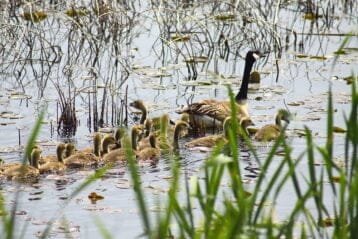
Conclusion
Summarize the significance of organizations supporting waterfowl conservation efforts
The tireless efforts of organizations and initiatives dedicated to waterfowl conservation play a vital role in preserving these magnificent creatures and ensuring the balance of our ecosystems. With its focus on wetland habitat restoration and research, Ducks Unlimited has made significant strides in protecting waterfowl populations.
Through their projects, they have provided a haven for these birds and educated communities about the importance of wetlands. Delta Waterfowl’s innovative approaches to predator management and breeding ground protection have enhanced nesting success and higher survival rates.
On a larger scale, initiatives like the North American Waterfowl Management Plan (NAWMP) unite countries across flyways to implement effective strategies for conserving habitats critical for waterfowl. The Atlantic Flyway Council’s relentless efforts on the East Coast highlight the value of coastal wetlands as stopover sites during migration while monitoring population trends.
Similarly, the Prairie Pothole Joint Venture is a testament to safeguarding breeding habitats in the Great Plains through partnerships with landowners and habitat restoration. Acknowledging lesser-known aspects supporting waterfowl conservation efforts, such as citizen science initiatives that track migration patterns through public participation, is crucial.
Additionally, artificial nesting structures provide additional breeding sites that benefit waterfowl populations. Using satellite telemetry technology enables researchers to gain valuable insights into migration routes and wintering areas, helping us further understand these birds’ behaviors.
As we reflect on these collective endeavors towards waterfowl conservation, there is reason for optimism. Despite the challenges faced by these magnificent creatures, these organizations give us hope that we can protect their habitats and ensure their continued presence for future generations to marvel at.
By supporting these initiatives through awareness, volunteering, or donations, each of us can contribute towards preserving our natural heritage and sustaining the delicate balance of our ecosystems. Together, we can make a difference and safeguard the future of waterfowl populations.
